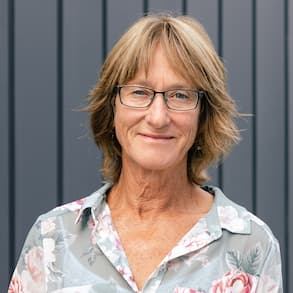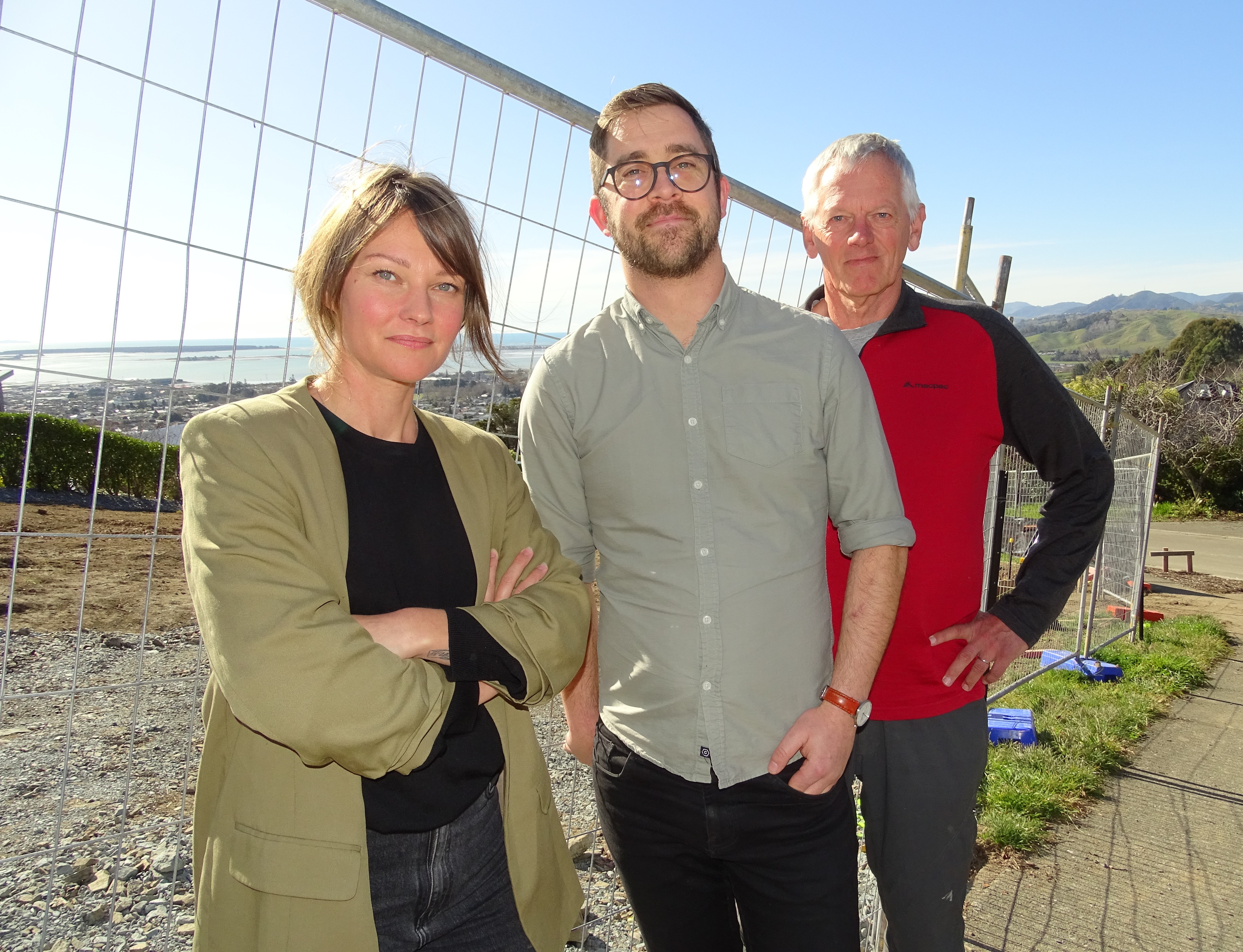Community at the heart of development


Overlooking Richmond, architects Magdalena Garbarczyk and William Samuels along with civil engineer Jan Heijs want housing developments that cater for the community. Photo: Anne Hardie.
Developers play a key role in future urban development in the region, but a local architect says the community needs to change its view of housing and make that clear for developers to follow.
William Samuels says the region has few good-quality approaches to housing for the general public to look at and that makes it hard for them to contemplate housing outside the norm and drive change in further developments. But he says change is needed.
He is part of the NelsonTasman2050 urban development think-tank and spoke at a Māpua meeting last week about tackling urban development challenges in the region with more sustainable, affordable and thoughtful approaches.
He says housing in the region does not cater for elderly, young professionals, seasonal workers, couples without children, people wishing to live alone, multigenerational families and those who want to live in an urban environment.
The community needs to consider terraces, duplexes and multi-dwelling houses in the mix of developments, as well as possibilities such as shared courtyards and communal gardens.
“We need to be thinking about those to try and get some of those housing answers,” he says. “We really need to consider building smaller and building better.”
Overseas, in the mix of urban developments, are popular super-small apartments, he says, where some units are just 23 square metres to cater for people with busy lifestyles or live alone and only want and need a small space.
Well-designed with high ceilings can make the smaller spaces feel bigger, he says.
Practicing what he preaches to build smaller and more sustainably, William and his partner have built a 42 square metre home on leased land. The couple built their home in two parts so that each part could be transported on a trailer if they need to relocate. The build cost about $150,000 plus GST.
Getting the community to consider housing alternatives is part of the solution, while he says local governments’ planning still has the largest impact on the future of housing in the region.
“The best thing we can do is push for better planning outcomes.”
Architect Magdalena Garbarczyk says, what the region really needs is a joint urban development agency between Nelson City Council and Tasman District Council to facilitate quality developments.
She says community needs to be at the heart of any development and the housing models need to change to reflect how people live.
That includes the ability for people to walk and cycle to amenities rather than get into their cars, which not only leads to more affordable living but is more sustainable.
Until now, the lack of housing developments around the centre of Nelson and Richmond has led to more cars on the road, she says. New Zealand has one of the highest number of cars per capita in the world and she says 46 per cent of Nelson’s city centre is given to cars, while the heart of Richmond is a shopping mall. She says a community needs to have a heart and culture does not happen in shopping centres.
Her vision for future development is where a community reclaims its streets and has more green open spaces that lead to connections and well-being.
Civil engineer Jan Heijs focused on Māpua, saying the village will expand extensively if plans go ahead with no requirements for housing to be better or smaller. He says there should be maximum lot sizes, a mix of housing styles, inclusion of medium-density housing and there should be support for social and community initiatives.
He says expansion of the village has tended to look after people moving to the region and their desires, but development should look after locals first to ensure the village character is retained through change.
